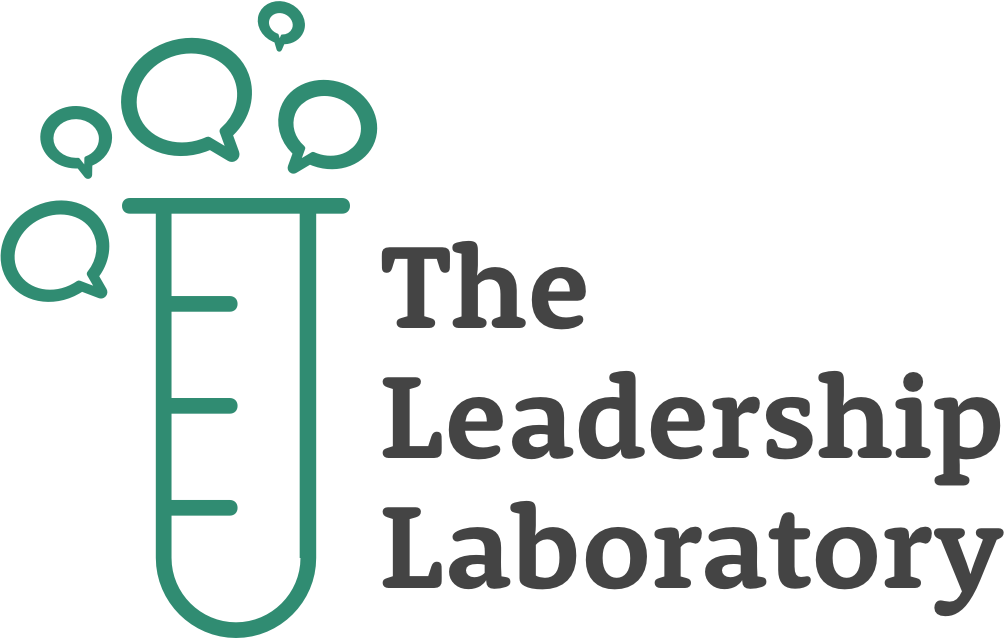Written by Jacob Goldstein — Executive Director
Interested in workshops on this topic for you and your team? Visit the Leadership + Management page for recommended interactive learning experiences from The Leadership Laboratory for emerging and established leaders in your organization.
What is “Name It To Tame It”?
Parents of young children may be familiar with the phrase “name it to tame it”, or the research lead by Professor Dan Siegel at UCLA in child development and psychology. Siegel’s research generally asserts that in order to curb a child’s emotional meltdowns, one of the first steps they must do is to actually name their emotion of what they’re feeling and thinking as a method of teaching emotional regulation. That exact same concept applies when working to bust biases. It’s not just the act of speaking it into existence, but naming our intention out loud in an effort to be held, and to hold ourselves, accountable.
Busting Biases in Hiring
In an effort to practice highly inclusive leadership, for this action we’ll start at the very beginning – the hiring process. In 2005, MIT researchers facilitated a study on bias in the hiring process. The created two sets of identical resumes, with one specific difference. Half of the resumes had prototypical African American sounding names – names like Tamika, Aisha, Rasheed and Tyron , and half of them had prototypical European American sounding names – names like Brendan, Greg, Emily and Anne. The MIT researchers sent these resumes out to organizations in the Boston and Chicago metropolitan areas for entry level positions in sales, administrative assistance, etc. For the resumes with those names, for every 10 resumes sent out, they received 1 call for an interview. The researchers took the exact same resume, and had the African American sounding names – Tamika, Aisha, Rasheed and Tyrone – and they needed 50% more applications to get a call for an interview. For resumes with these names, for every 15 resumes sent out, not 10, they would hear back about an interview. Do you think that the individuals who were reviewing resumes intentionally and consciously weren’t interested in interviewing an Aisha? Probably not – it’s an unconscious bias that steered hiring managers towards the European-American sounding names.
, and half of them had prototypical European American sounding names – names like Brendan, Greg, Emily and Anne. The MIT researchers sent these resumes out to organizations in the Boston and Chicago metropolitan areas for entry level positions in sales, administrative assistance, etc. For the resumes with those names, for every 10 resumes sent out, they received 1 call for an interview. The researchers took the exact same resume, and had the African American sounding names – Tamika, Aisha, Rasheed and Tyrone – and they needed 50% more applications to get a call for an interview. For resumes with these names, for every 15 resumes sent out, not 10, they would hear back about an interview. Do you think that the individuals who were reviewing resumes intentionally and consciously weren’t interested in interviewing an Aisha? Probably not – it’s an unconscious bias that steered hiring managers towards the European-American sounding names.
So how can we combat that? Think back to the title of this blog post – “name it to tame it”. In an effort to tame the unconscious biases that block inclusive practices, there are a few specific components that we have to name. In particular, how can we specifically list out what is required for success in the position? If someone steps into this role, what will define that they are a successful asset to the team?
Busting Biases: Clarifying Candidate Skillsets
In a hiring scenario, knowing what will define success in the role will help us to determine what to look for on a resume, and ignoring everything else. Another resume study really nicely showcased the benefits of this as well – this time, in hiring for a police chief.
 There were two types of resumes of applicants for the police chief role – some of the candidates had “street smarts”, and others who were more academic, we’ll call those “school smarts”. This time, they blinded the resumes – there were no names associated. By and large, when reviewing resumes, the police departments preferred individuals for the role with school smarts. They repeated the study again, this time adding names back in. This time, 50% of the resumes had male-sounding names, and 50% of the resumes had female-sounding names. This time, by and large, regardless of school smarts or street smarts, the male-sounding names were chosen over the ones with the female-sounding names. When asked why, the responses were specific, though never acknowledged a conscious bias towards male candidates. They would respond with comments like “Even though she had a lot of school smarts, we really preferred someone with street smarts”. And they really believed that what they were looking for was the difference, not the bias.
There were two types of resumes of applicants for the police chief role – some of the candidates had “street smarts”, and others who were more academic, we’ll call those “school smarts”. This time, they blinded the resumes – there were no names associated. By and large, when reviewing resumes, the police departments preferred individuals for the role with school smarts. They repeated the study again, this time adding names back in. This time, 50% of the resumes had male-sounding names, and 50% of the resumes had female-sounding names. This time, by and large, regardless of school smarts or street smarts, the male-sounding names were chosen over the ones with the female-sounding names. When asked why, the responses were specific, though never acknowledged a conscious bias towards male candidates. They would respond with comments like “Even though she had a lot of school smarts, we really preferred someone with street smarts”. And they really believed that what they were looking for was the difference, not the bias.
By leveraging the idea of “name it to tame it”, we put our bias busters into action. Saying “we’re looking for someone who has school smarts” or “an ideal candidate has a demonstrated experience of working with executives” or “someone successful in this role is excellent with their ability to influence” or any number of qualifications – and actually writing or saying it out loud to others – can help to ensure that we curb any potential biases from entering into our hiring processes. If you were curious, the researchers completed a third study, this time asking the participants to explicitly name which type of candidate they were looking for – once again, school smarts topped the list. When the teams reviewed resumes, this time the full resumes with the names attached, there was no more gender bias. Participants were able to successfully look for the resumes of individuals who fit the position they were looking for, regardless of a male or female sounding name. As a leader, we must articulate our expectations for success, and what we’re looking for in a candidate, before beginning the resume review process. By doing so, we can consciously make a commitment to seek candidates in-line with our needs, and work to create a more inclusive culture before the candidate has even walked in the door.
Inspiring Inclusion in Hiring & Beyond
And it doesn’t end here – once we’ve gone through the resume review process, how can we make sure that the rest of the hiring process is equally as inclusive? It requires us to create highly structured interviews, and determining questions that every candidate should get. Each of these questions should be specifically tied to the competency we are looking for – the ability to influence, or problem solving, or flexibility, etc. Keep in mind that there are more unique ways to accomplish that goal – we can still be open to creative, different, or non-traditional candidates that can showcase a unique version of a similar experience. When every candidate has had exposure to the same questions, we can appropriately compare the candidates to weed out potential biases that might come up in an interview setting.
Take a moment to reflect on the hiring processes for your team – even better if you can think about a new position you are looking to fill. For that role, what are the specific attributes that you can identify that will define success in the role? What should you be looking for in a resume that would highlight those characteristics? And, what questions can you ask that would allow all of the candidates that you interview to share their experiences or knowledge of that specific competency?
The Leadership Laboratory is a nation-wide, Chicago-based learning and leadership development company. We build and facilitate custom team and leadership development workshops aimed at transforming the way we lead our work and people. Through interactive workshops, participants will experience customized professional development for emerging and new leaders, established and senior leaders, and teams of all sizes. Feel free to browse our website, www.leadershipdevelopmentlab.com, to learn more about our team building workshop and leadership development programs.

